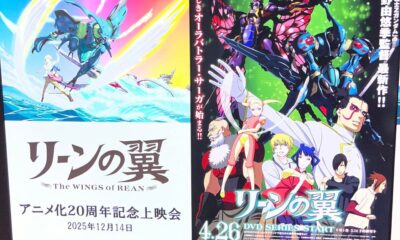Science
New Hydrogel Adhesive Sticks Stronger Underwater, Opens Possibilities

Researchers have developed a groundbreaking hydrogel adhesive that demonstrates exceptional strength underwater. This new material, which has held a rubber duck securely attached to a seaside rock for over a year, showcases the potential of hydrogels in various fields, including robotics, construction, and medicine.
Hailong Fan, a researcher from Shenzhen University in China, highlighted the significance of their creation: “We developed a super-adhesive hydrogel that works extremely well even underwater – something very few materials can achieve.” The research team, which included scientists from Hokkaido University in Japan, analyzed an extensive collection of sticky protein sequences—over 24,000—from various organisms. This analysis allowed them to identify the optimal combinations of amino acids necessary for strong adhesion.
Through their innovative approach, the researchers created 180 different types of adhesive hydrogels. They further enhanced the development process by employing artificial intelligence models to predict superior formulations of these materials. This led to the creation of a versatile hydrogel that maintains its adhesion even when subjected to multiple applications and submersion in seawater.
The hydrogel’s performance stands out, achieving adhesion strength exceeding 1 megapascal underwater—approximately ten times stronger than many conventional soft adhesives. Zhao Qin from Syracuse University commented on the research, stating, “This demonstrates a paradigm shift in the way we can design high-performance soft materials.” He commended the team for successfully capturing stickiness patterns found in natural proteins.
One of the most striking demonstrations of this hydrogel’s capabilities was its ability to keep a yellow rubber duck firmly attached to a rock, even in the face of relentless ocean waves. In a practical test, the hydrogel effectively sealed a leaking water pipe, suggesting potential applications in repairing underwater structures and enhancing the water resistance of flexible electronics and robotics.
The hydrogel’s biocompatibility adds another layer of promise. The researchers confirmed this by implanting samples under the skin of mice, paving the way for its use in biomedical applications such as securing implants and serving as surgical glue.
While the hydrogel’s adhesive properties are impressive, Qin noted that it must be relatively thick to function optimally. He expressed hope that future tests will explore its performance in less controlled environments, particularly on rough, contaminated, or dynamic surfaces.
The research team has taken steps to protect their innovation, submitting a patent for the hydrogel through Hokkaido University, where the majority of the researchers are based. As this technology develops, its potential impact on various industries could be substantial, marking a significant advancement in adhesive materials.
-

 Technology5 months ago
Technology5 months agoDiscover the Top 10 Calorie Counting Apps of 2025
-

 Technology3 weeks ago
Technology3 weeks agoOpenAI to Implement Age Verification for ChatGPT by December 2025
-

 Health3 months ago
Health3 months agoBella Hadid Shares Health Update After Treatment for Lyme Disease
-

 Health3 months ago
Health3 months agoAnalysts Project Stronger Growth for Apple’s iPhone 17 Lineup
-

 Health3 months ago
Health3 months agoErin Bates Shares Recovery Update Following Sepsis Complications
-

 Technology5 months ago
Technology5 months agoDiscover How to Reverse Image Search Using ChatGPT Effortlessly
-

 Technology3 months ago
Technology3 months agoElectric Moto Influencer Surronster Arrested in Tijuana
-

 Technology2 months ago
Technology2 months agoDiscover 2025’s Top GPUs for Exceptional 4K Gaming Performance
-

 Technology5 months ago
Technology5 months agoMeta Initiates $60B AI Data Center Expansion, Starting in Ohio
-

 Technology5 months ago
Technology5 months agoRecovering a Suspended TikTok Account: A Step-by-Step Guide
-

 Health5 months ago
Health5 months agoTested: Rab Firewall Mountain Jacket Survives Harsh Conditions
-

 Lifestyle5 months ago
Lifestyle5 months agoBelton Family Reunites After Daughter Survives Hill Country Floods





















